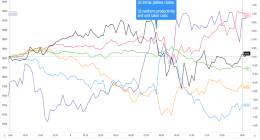NASA recently revealed satellite images of an underwater volcano dubbed the ‘Sharkcano’ after it erupted in the South Pacific.
The Sharkcano eruption drew a lot of attention due to the mutant sharks said to be living inside but there are plenty of other underwater volcanoes that scientists are hunting for.
Although the Sharkcano was only thought to be deadly for any marine life nearby the eruption, some underwater volcanoes pose a much greater risk.
That’s why scientists have to hunt and seek them out.
Krakatoa is one of the most famous underwater volcanoes and it was said to kill tens of thousands of people with an eruption in 1883.
More recently, an underwater volcano called the Hunga-Tonga Hunga-Ha’apai volcano left at least 6 people dead and others injured and missing after its eruption led to a tsunami earlier this year.
The Hunga Tonga eruption negatively impacted nearly 100,000 people and temporality left them cut off from the rest of the world after undersea communication cables were severed in the blast.
This is why volcanologists are on the hunt for more underwater volcanoes so that the world can be prepared if they erupt.
According to the BBC, New Zealand’s National Institute of Water and Atmospheric Research (Niwa) launched a voyage to investigate the Hunga Tonga site.
Governments around the world are also said to have investigative teams searching for other dangerous underwater volcanoes.
Most read in Tech
The US even has a Volcano Disaster Assistance Program.
The BBC report also mentions work by researchers from the Ecole Normale Supérieure in Paris.
Researcher Javier Escartin told the news outlet: “People are interested in volcanoes because they are a risk.
“In general, deep volcanoes do not pose much danger; more dangerous are those near the sea surface or that emerge above it.”
He added: “Imagine an explosion the scale of Tonga in the Mediterranean or Hawaii.
“The death and destruction, the damage to the economy and transportation systems… but of course we can’t study the volcanoes if we don’t know where they are.”
Hunting for underwater volcanoes isn’t an easy task and involves things like special underwater sound monitoring that can detect explosions.
In 2015, scientists sent cameras down to the Kavachi volcano in the Solomon Islands, also known as the Sharkcano, to study inside.
This is how they spotted two species of shark described as “mutants” as they were able to survive in the acidic conditions that should have killed them.
Researchers also use techniques like mapping the ocean floor to observe volcanoes.
Scientists from New Zealand’s National Institute for Water and Atmospheric Research recently did this with the the Hunga-Tonga Hunga-Ha’apai.
They found the volcano is now 2.5miles wide and drops 2,789 feet.
Before the huge explosion, it only dropped 492 feet.


That’s a staggering 2,297 feet difference.
Thankfully, the volcano is not expected to have a similar eruption for over 100 years.










